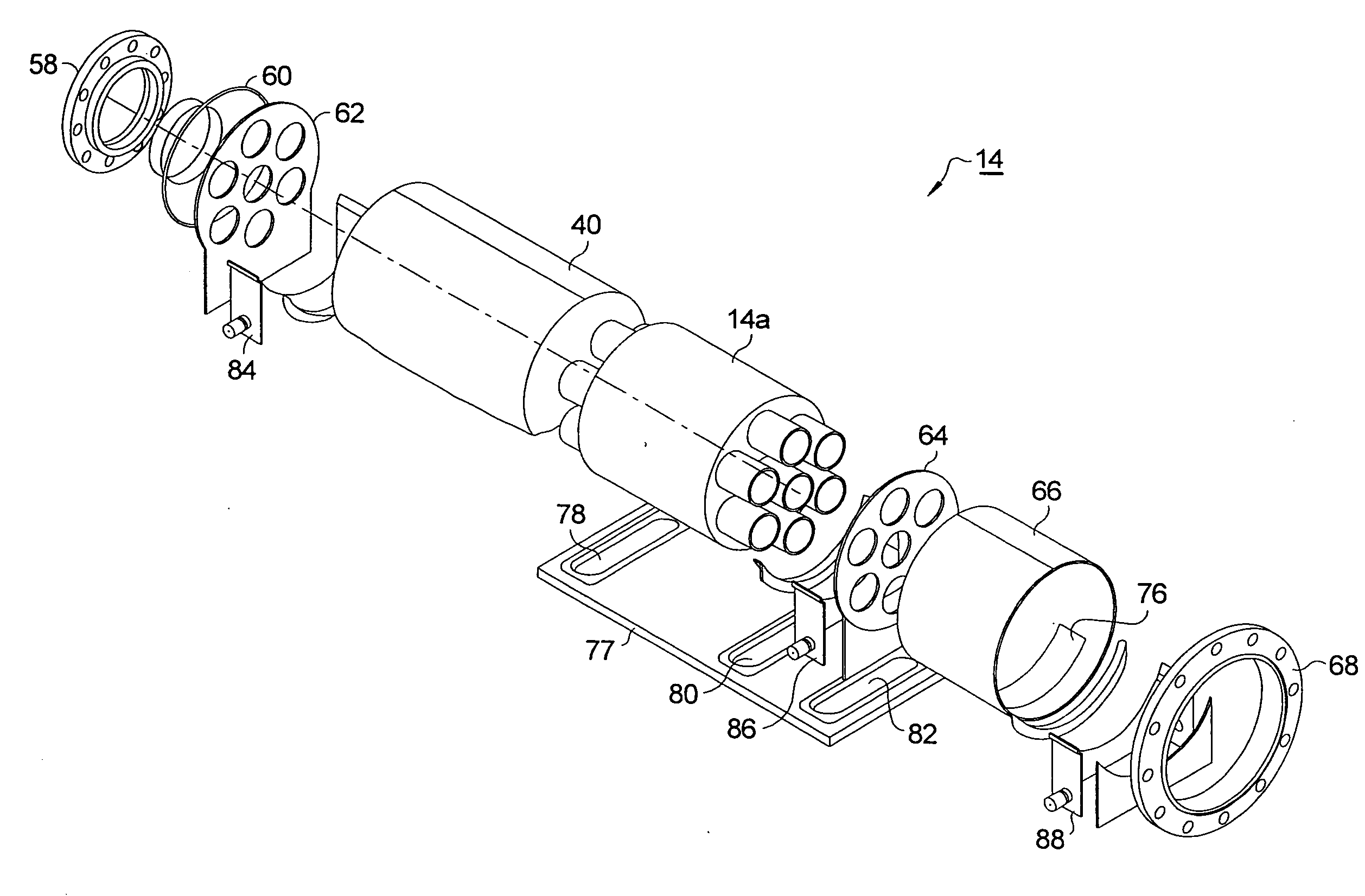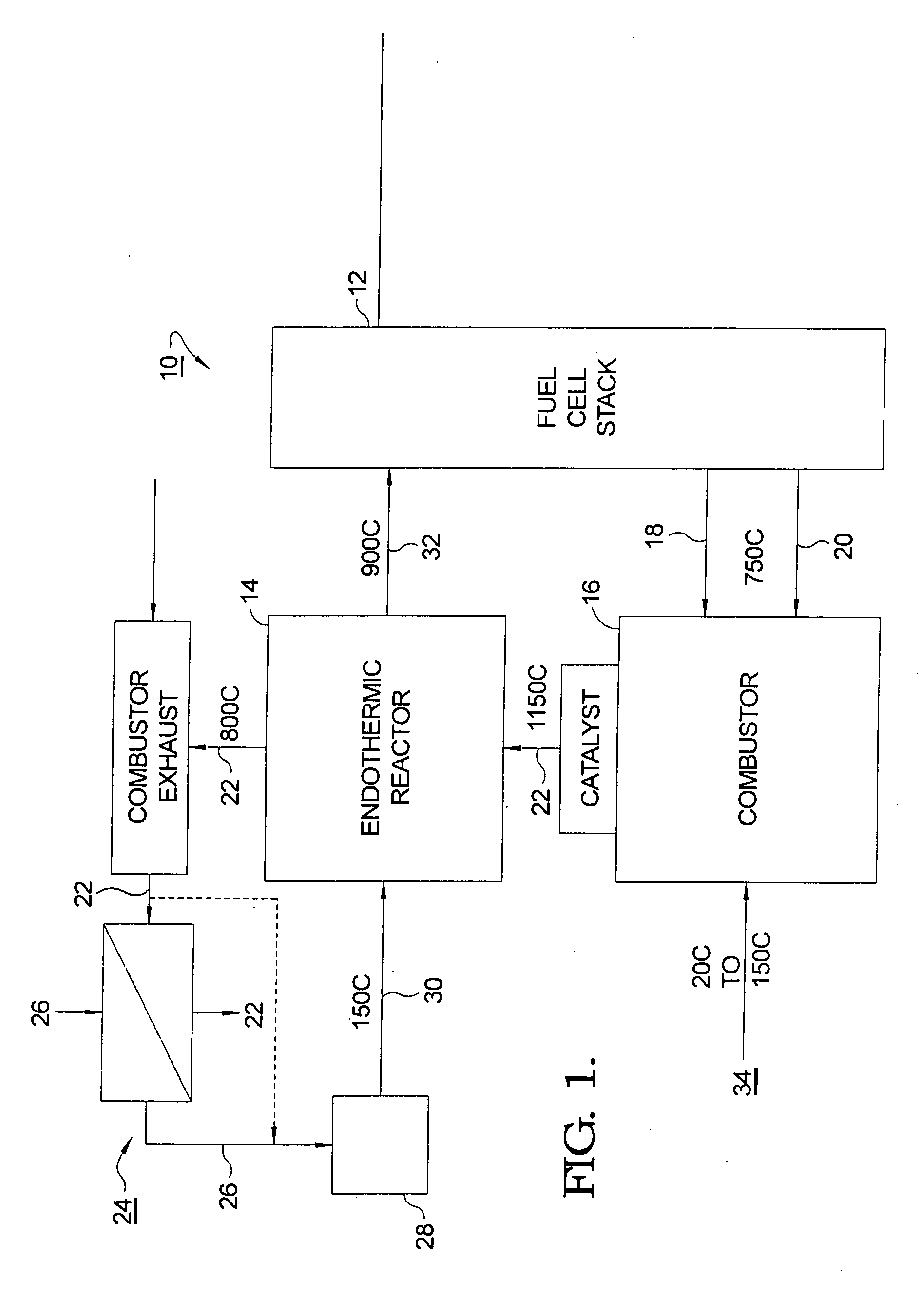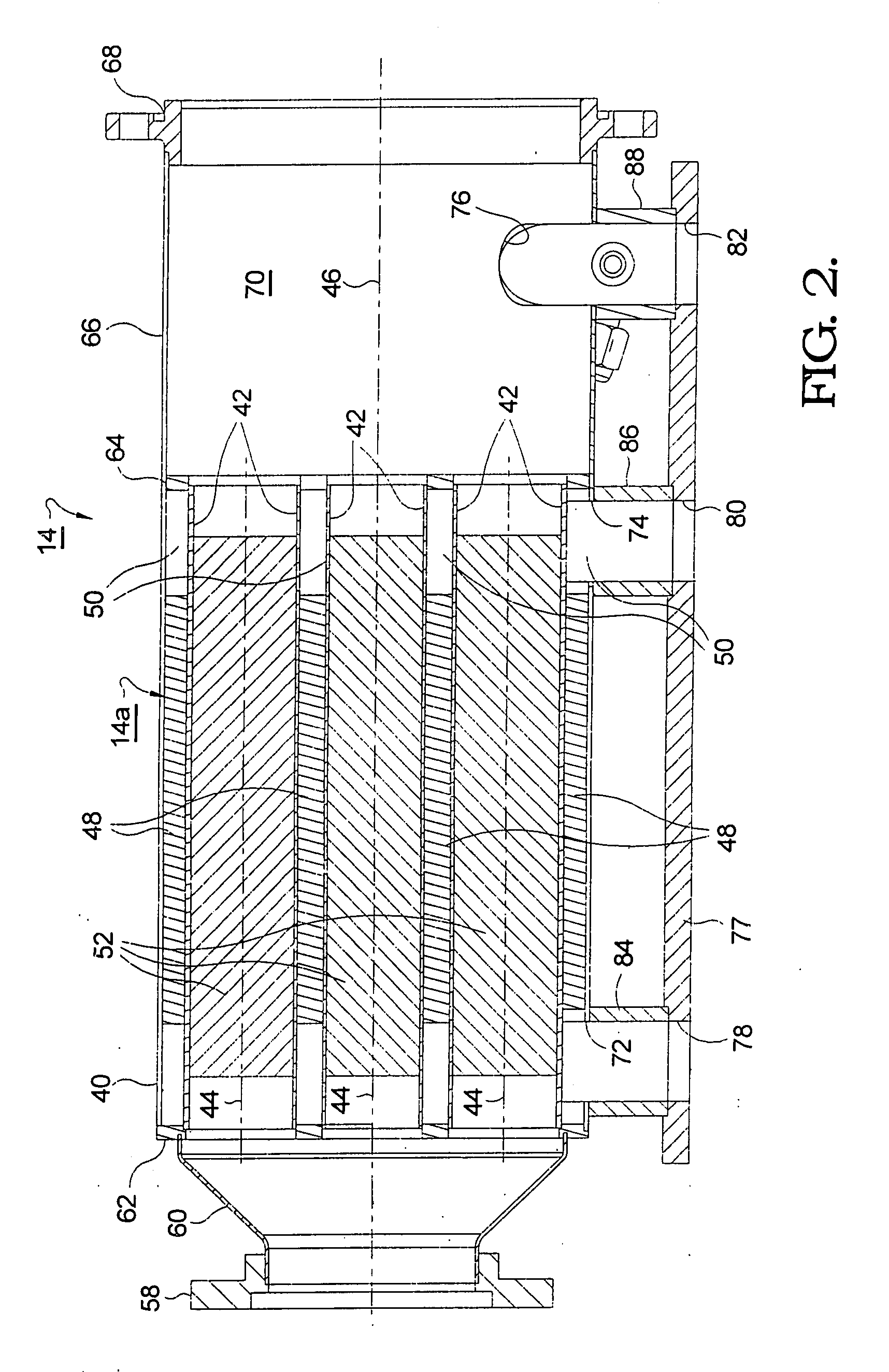Multi-tube fuel reformer with augmented heat transfer
a fuel reformer and multi-tube technology, applied in electrochemical generators, sustainable manufacturing/processing, electrochemical generators, etc., can solve the problems of poor heat transfer, poor washcoat adhesion, and prior art fuel reformers such as catalytic partial oxidation (cpox) reformers have limitations in maximum obtainable reforming efficiency, etc., to achieve excellent mechanical stability of washcoat, excellent heat transfer, and excellent heat transfer
- Summary
- Abstract
- Description
- Claims
- Application Information
AI Technical Summary
Benefits of technology
Problems solved by technology
Method used
Image
Examples
Embodiment Construction
[0019]Referring to FIG. 1, a schematic drawing of a fuel cell system 10 employing endothermic fuel reforming in accordance with the invention includes a fuel cell stack 12, for example, a solid oxide fuel cell stack; an endothermic reforming reactor 14; a combustor 16 for burning tail gases 18 (anode) and 20 (cathode) from stack 12 to produce a combustor exhaust 22; and heat exchanger 24 for vaporizing incoming fuel 26 to be mixed with air, steam, and recycled anode tail gas 28.
[0020]In operation, incoming fuel 26 is vaporized by heat exchanged from combustor exhaust 22 either before or after being mixed with air, steam, and recycled anode tail gas 28. The flows of air, steam, and recycled anode tail gas are individually controlled and variable, as is known in the prior art of endothermic reforming. The resulting fuel stream 30, typically at a temperature of about 150° C., is fed to endothermic reactor 14 wherein reformate 32 is produced and supplied to stack 12 at a temperature of ...
PUM
 Login to View More
Login to View More Abstract
Description
Claims
Application Information
 Login to View More
Login to View More - R&D
- Intellectual Property
- Life Sciences
- Materials
- Tech Scout
- Unparalleled Data Quality
- Higher Quality Content
- 60% Fewer Hallucinations
Browse by: Latest US Patents, China's latest patents, Technical Efficacy Thesaurus, Application Domain, Technology Topic, Popular Technical Reports.
© 2025 PatSnap. All rights reserved.Legal|Privacy policy|Modern Slavery Act Transparency Statement|Sitemap|About US| Contact US: help@patsnap.com



